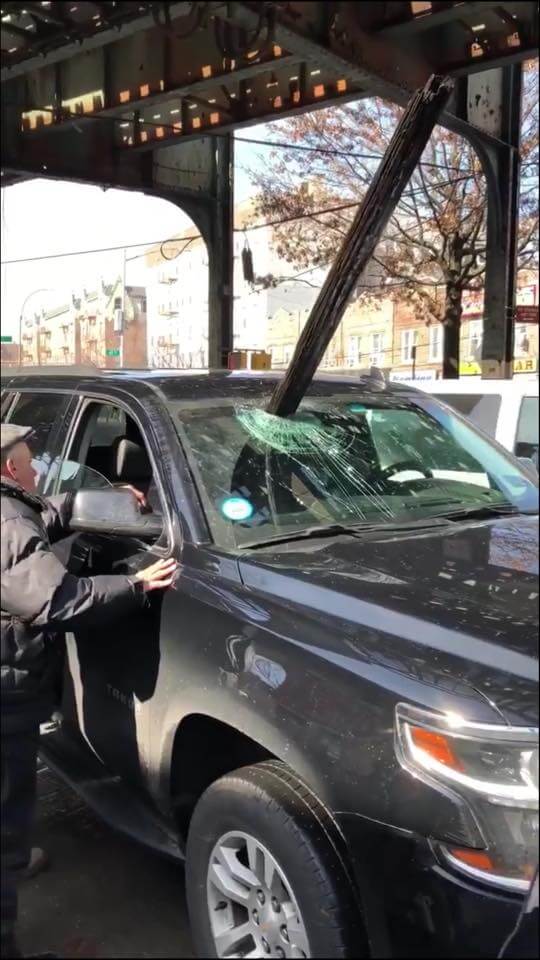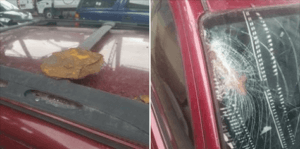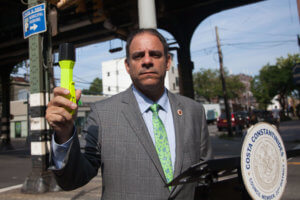Lawmakers in western Queens are applauding the MTA’s plan to spend nearly $325 million to significantly expand safety netting on elevated subway lines as part of its proposed $51.5 billion capital plan.
The news was welcomed in Woodside and Sunnyside after there were a frightening number of near-misses with debris falling from the No. 7 subway line, in particular, a notorious event last February when a long wooden plank shook free and pierced the windshield of an SUV on Roosevelt Avenue, narrowly missing an unidentified driver near 65th Street.
Councilman Jimmy Van Bramer released an extraordinary photo of the damage and began a campaign calling for the MTA to take action before someone got seriously injured or killed.
“I am relieved to see the MTA allocate $325 million in its capital plan to install protective netting under all elevated subway lines across New York City,” Van Bramer said. “This is a huge win after months of advocating with the community for improvements along the 7 train. The MTA’s capital plan is outlined for the next five years, but we must keep up the pressure to ensure that the netting is put up as soon as possible.”
And it wasn’t just the wooden plank incident that scared motorists and pedestrians along Roosevelt Avenue. Chunks of metal have fallen smashing windshields and several times people walking near the 52nd Street station have nearly been struck by falling debris.
“After at least seven consecutive incidents of dangerous falling debris, this situation still must be treated with urgent care until the safety of all New Yorkers is guaranteed. We are incredibly lucky that no one has been injured or killed so far.”
The MTA was unable to provide a timeline as they are awaiting of an evaluation of a pilot program in which knotless nylon netting of high tenacity nylon and polypropylene mesh is installed. The agency is also reviewing and analyzing data from the Chicago Transit Authority, and will then determine if and how it can be applied to the MTA system.
“Safety is the top priority at NYC Transit, and we continually review our system to find ways it can be enhanced and improved,” an MTA spokesman said. “Increasing netting on elevated structures is just one of our efforts.”
Councilman Costa Constantinides has been calling for protective netting to be installed under the entirety of the elevated N/W line in Astoria since August when a heavy metal flashlight fell from a construction project and nearly struck a pedestrian. He said he regularly hears complaints and reads tweets from Astoria residents about debris falling onto 31st Street from construction or track maintenance above.
“I’m glad to see the MTA finally recognizes that pedestrians and cyclists are at risk anytime they cross the street of ride under the elevated track,” Constantinides said. “Flashlights shouldn’t fall from the sky and nearly hit someone in the head — but that’s exactly what happened here in Astoria this summer. I hope the MTA will be a good community partner by installing protective netting under the entirety of the N/W elevated track in Astoria.”

































